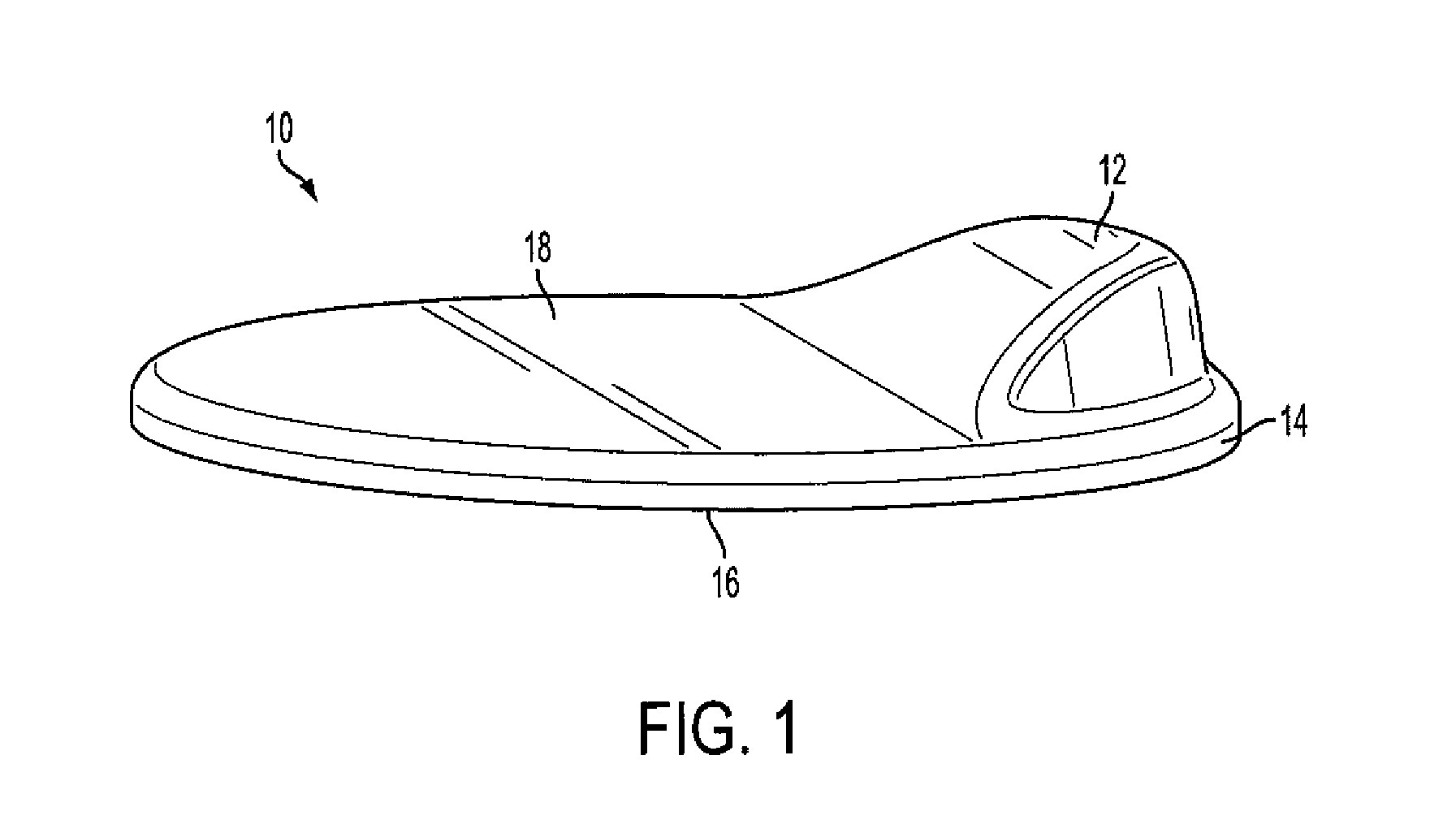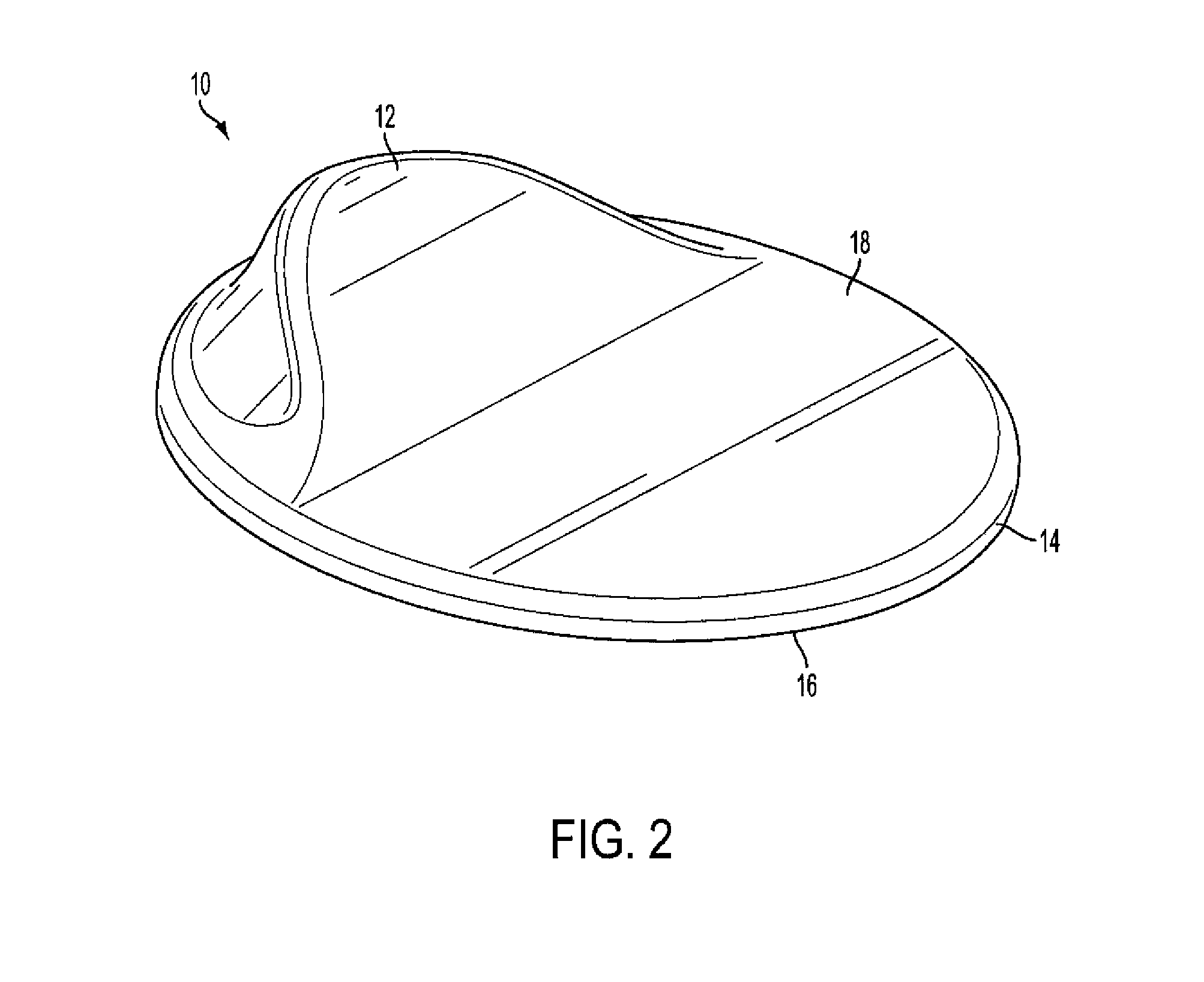Interface enhancement component for use with electronic touch-screen devices
- Summary
- Abstract
- Description
- Claims
- Application Information
AI Technical Summary
Benefits of technology
Problems solved by technology
Method used
Image
Examples
Embodiment Construction
Definitions
[0035]Where the definition of a term departs from the commonly used meaning of the term, applicant intends to utilize the definitions provided below, unless specifically indicated.
[0036]“Component” is used to describe the entire general embodiment of the invention article.
[0037]“User interface” is meant as the portion of the body used to manipulate the touch-based, touch-sensitive, or motion-sensitive device (hereinafter “touch device”) and which may make direct or indirect contact with the touch device.
[0038]A “touch-screen device” or “touch device” is meant to refer to an electronic visual display that can detect the presence and location of a touch within the display area. The term generally refers to touching the display of the device with a finger or hand. Touch screens can also sense other passive objects, such as a stylus. Touch screens are common in devices such as all-in-one computers, tablet computers, and smartphones. The touch screen has two main attributes. F...
PUM
 Login to View More
Login to View More Abstract
Description
Claims
Application Information
 Login to View More
Login to View More - R&D
- Intellectual Property
- Life Sciences
- Materials
- Tech Scout
- Unparalleled Data Quality
- Higher Quality Content
- 60% Fewer Hallucinations
Browse by: Latest US Patents, China's latest patents, Technical Efficacy Thesaurus, Application Domain, Technology Topic, Popular Technical Reports.
© 2025 PatSnap. All rights reserved.Legal|Privacy policy|Modern Slavery Act Transparency Statement|Sitemap|About US| Contact US: help@patsnap.com



